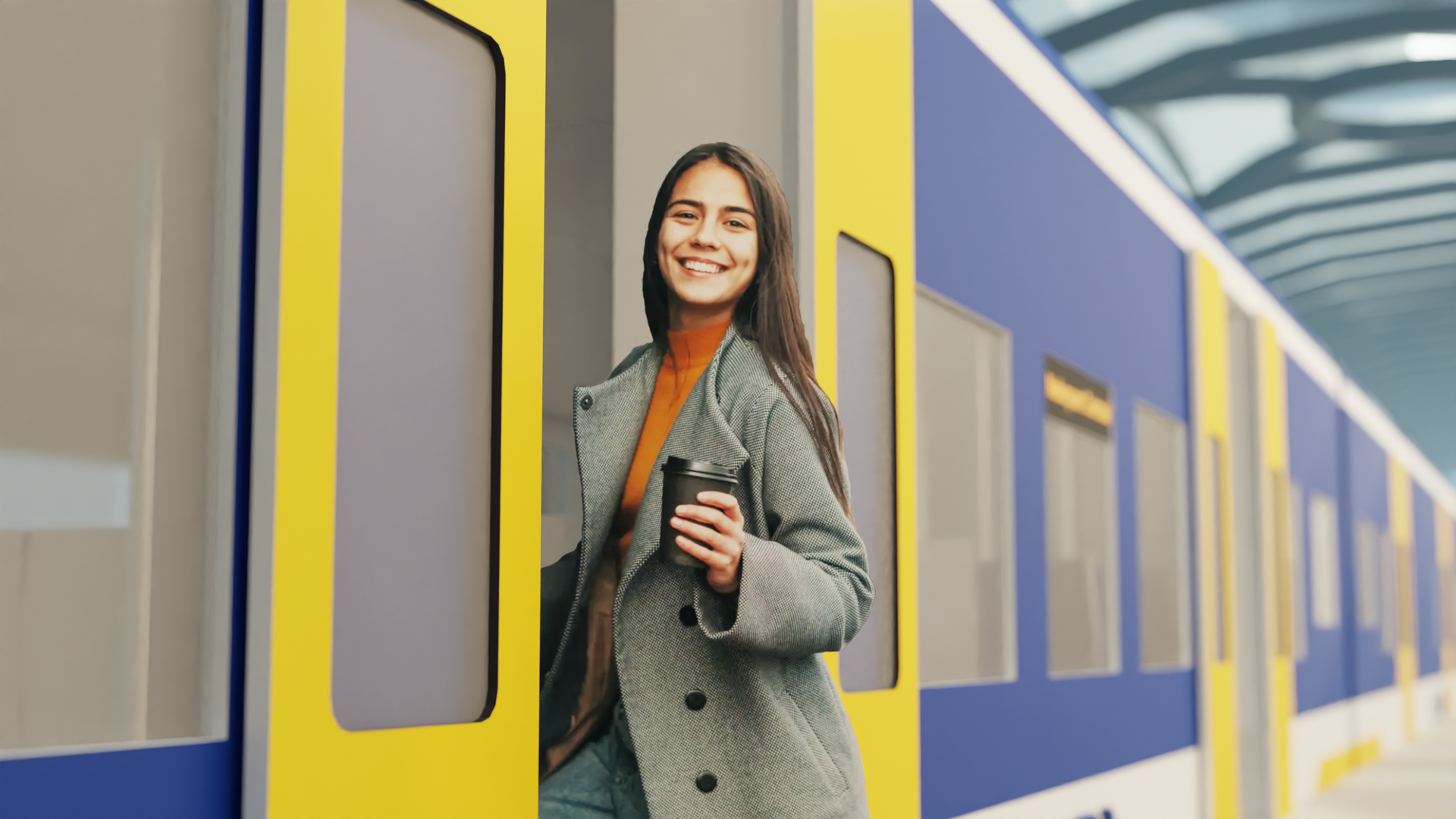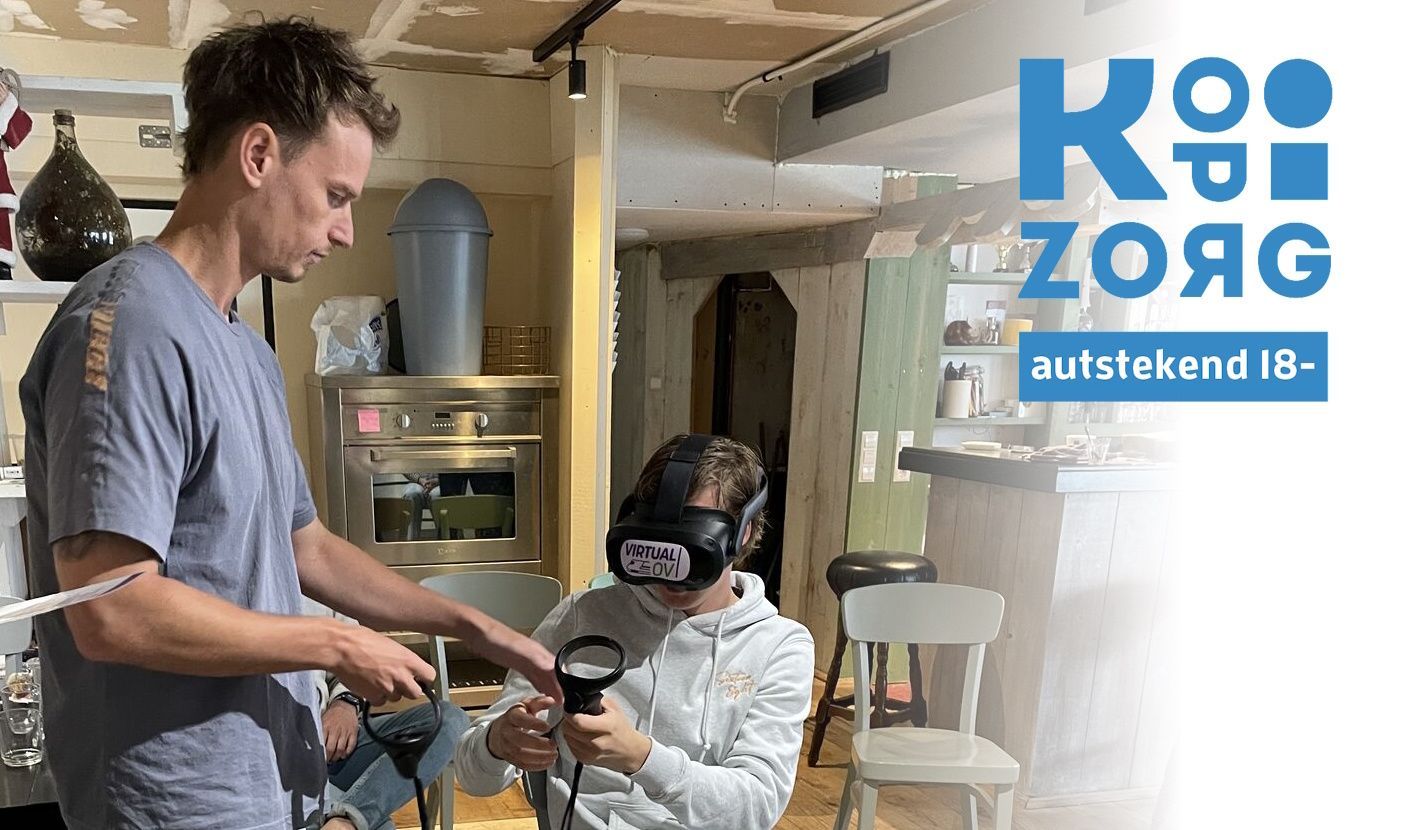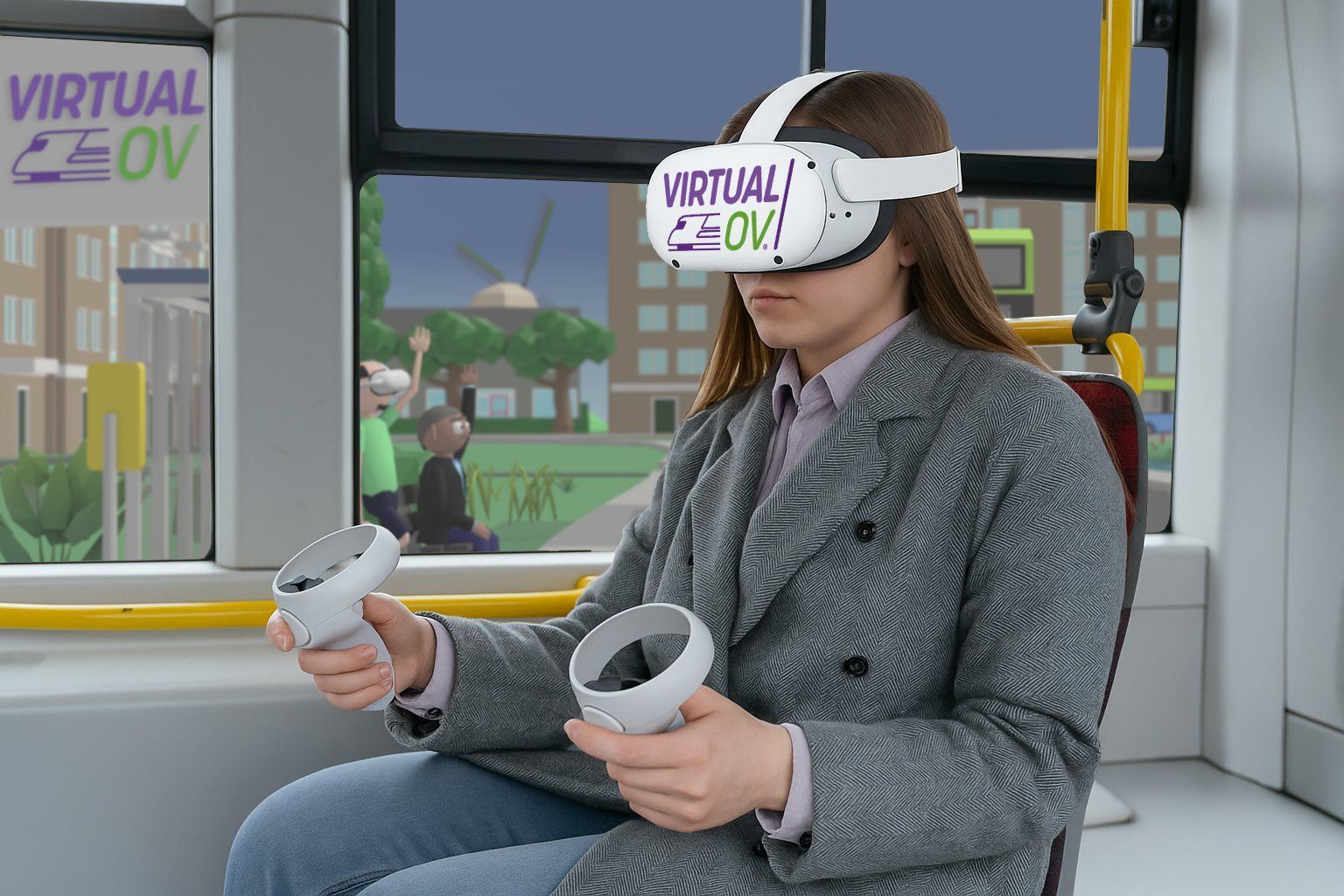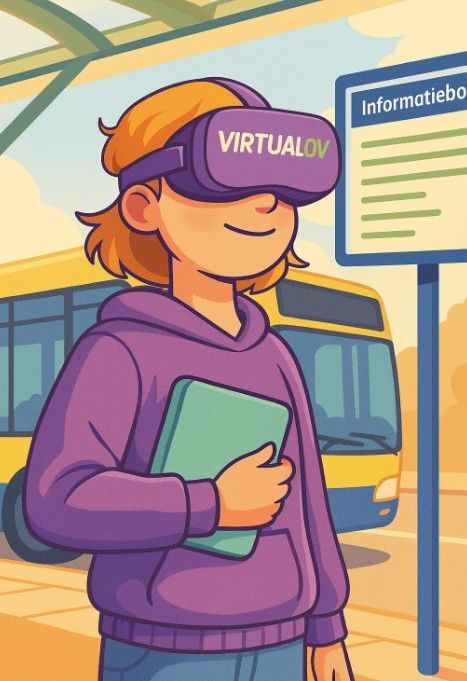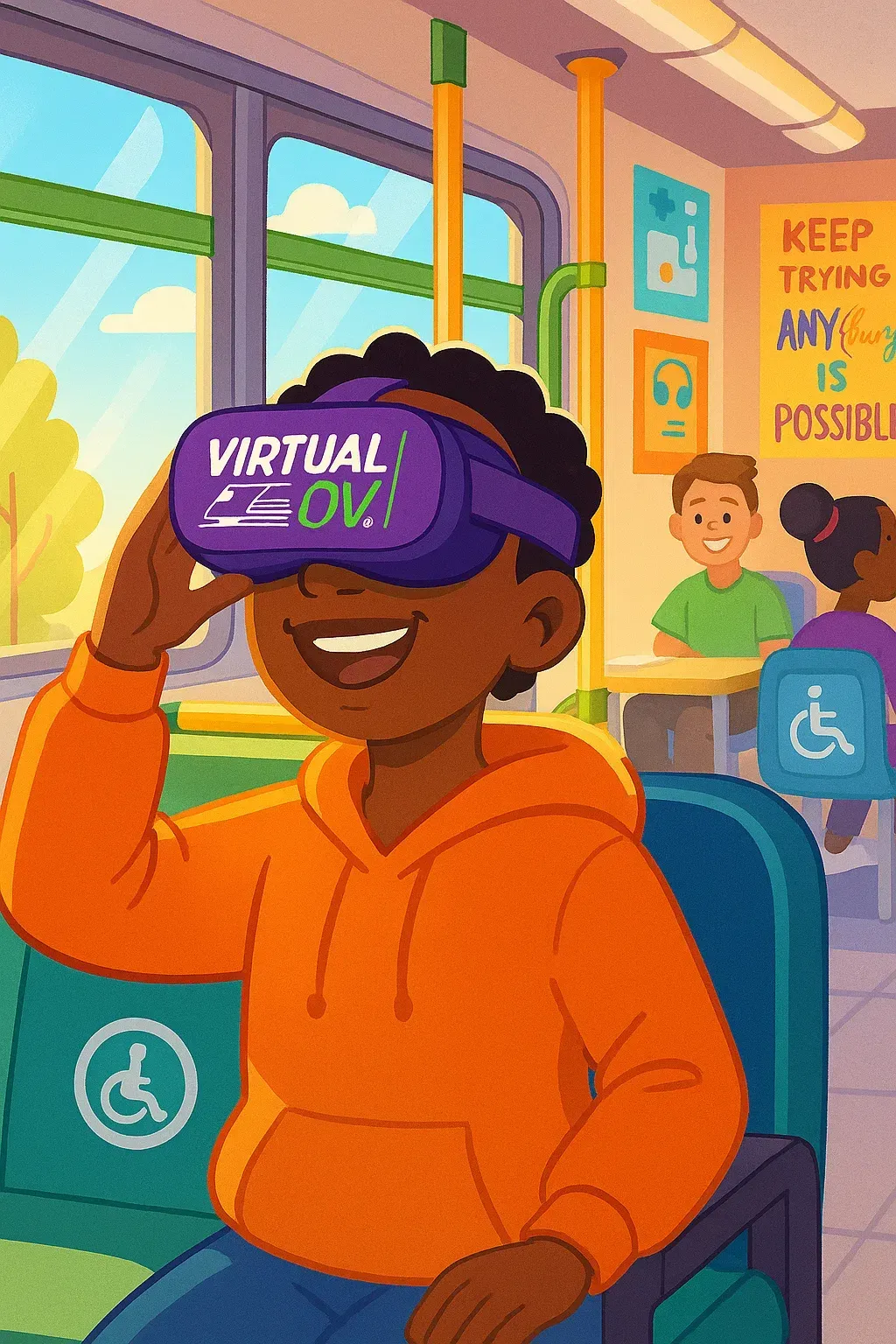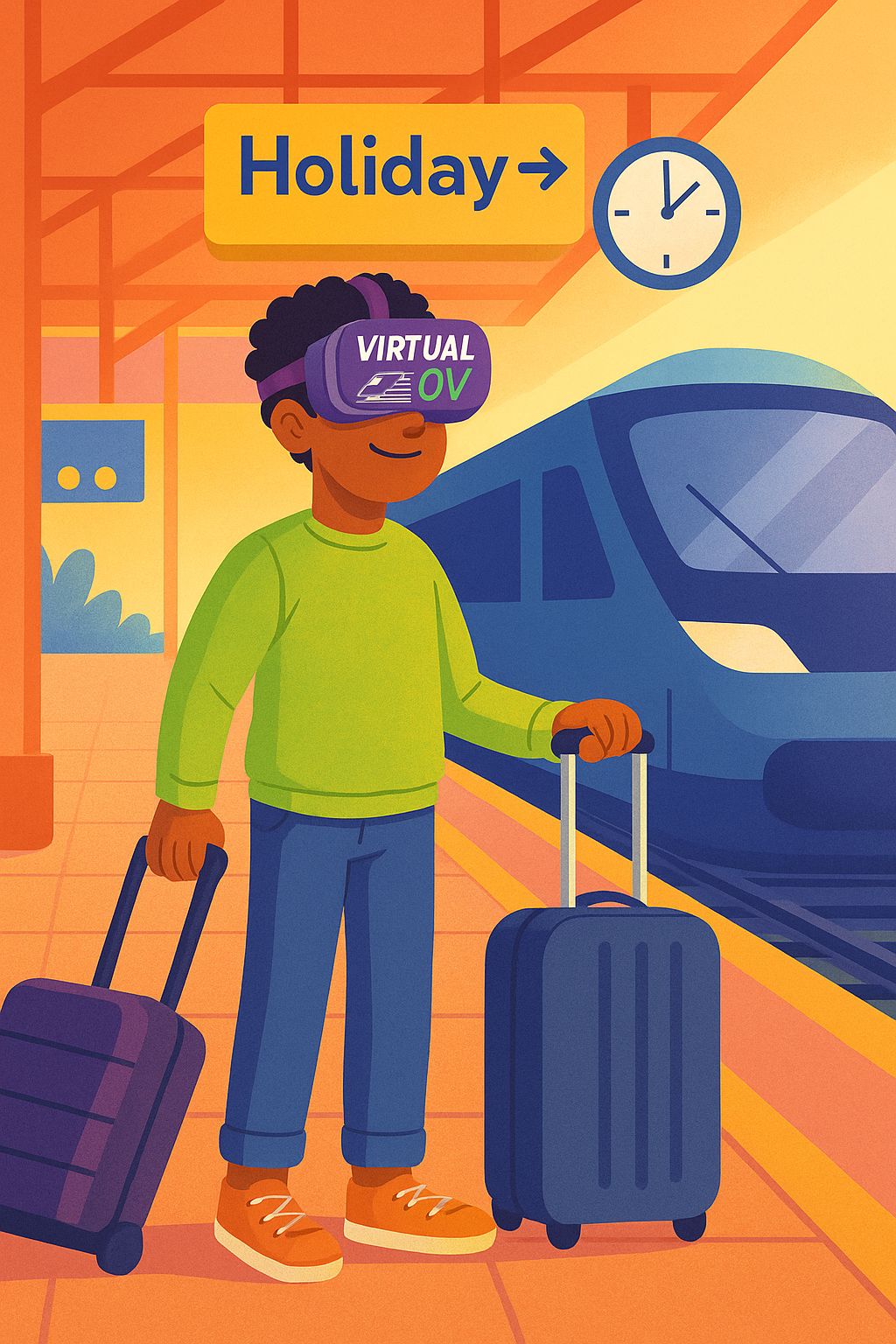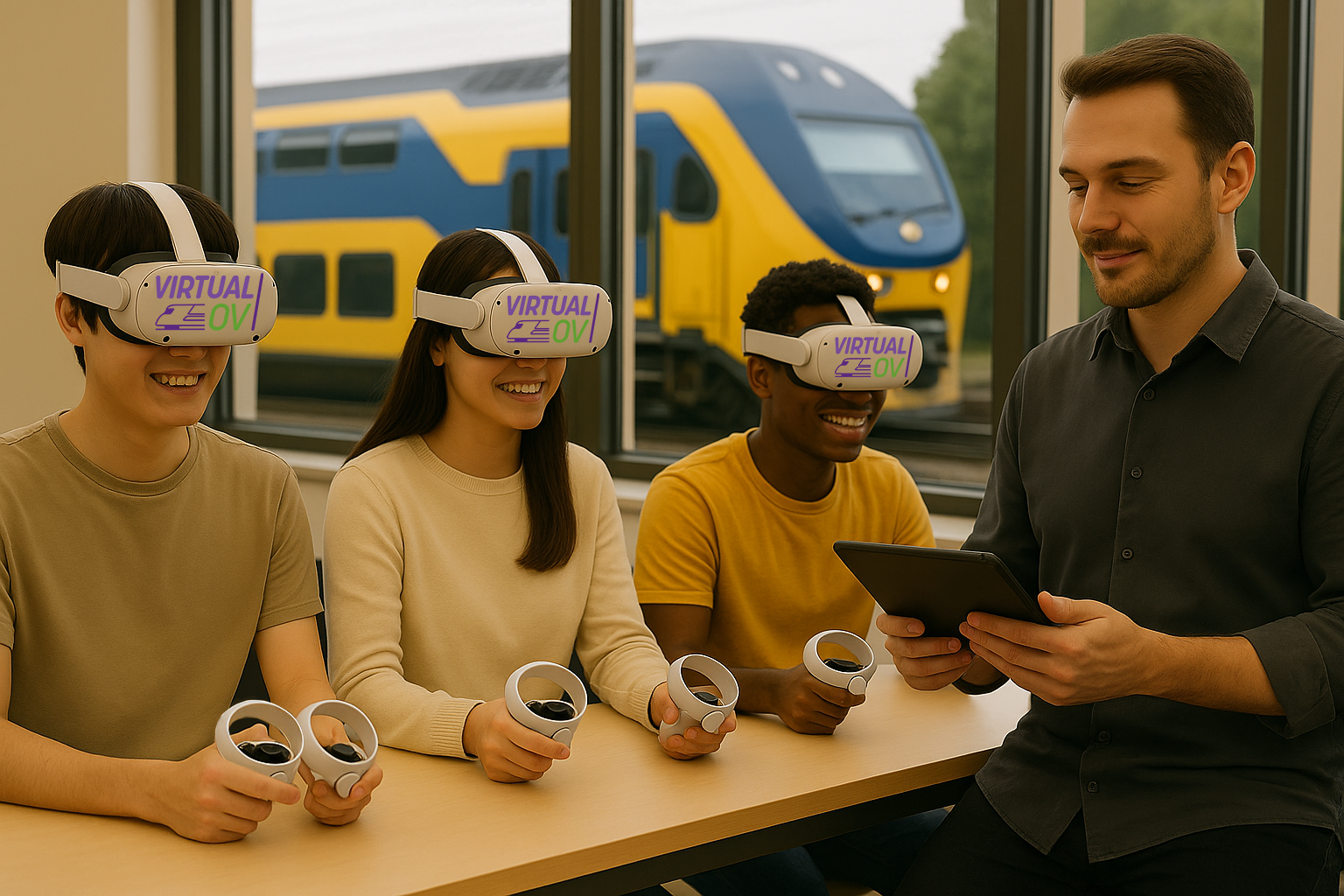Learning to travel playfully for young people with autism
As an outpatient support worker at Kop-Zorg in Alkmaar, Dmitri Hazes knows better than anyone how important independence is for young people with autism. And public transport is precisely the barrier many of them experience. Fortunately, there's Virtual OV, a virtual learning platform that makes Dmitri's work much more enjoyable and effective.
Kop-Zorg, specifically the " Autstekend " program for young people up to 18 years old, offers a safe haven where young people with autism and/or ADHD can find personalized support. Dmitri currently supports 16 young people, each with their own questions and needs. From social skills training to managing schoolwork, Dmitri is ready to listen and offer practical tips.
But what about public transport? "Many young people find it daunting to travel independently by train for the first time," says Dmitri. "There's a lot involved: buying tickets, checking in and out, finding the right platforms, and so on. Virtual public transport is a real solution in that case."
Enthusiasm everywhere
Dmitri, an avid gamer himself, introduced Virtual Public Transport to Kop-Zorg and regularly helps his colleagues with the setup. "The gaming aspect really appeals to our target audience," he says enthusiastically. "Some even come just to try the game, apart from practicing their public transport skills. And as long as they're having fun and laughing, that's already invaluable."
Learn to travel playfully
Virtual Public Transport is more than just a game. It's a serious tool that helps young people practice the executive skills needed to travel successfully on public transport. Think of scanning your train ticket at the gate or finding the right information signs. "It gives them a feel for what to expect on the real platform," Dmitri explains.
A bridge between fear and reality
For young people with autism, the thought of traveling by public transport can be overwhelming. Virtual public transport bridges the gap between those fearful thoughts and reality. It's a safe environment where they can experiment, make mistakes, and learn from their experiences.
"It's a great stepping stone to train travel," says Dmitri. "Maybe not completely independently yet, but with supervision. And that's already a huge step forward."
The 'fun factor'
What makes Virtual Public Transport so effective is the fun factor. "When our young people enjoy something, their responsive brain switches on," Dmitri explains. "They then retain tips better and recognize situations more quickly. Like the tip about what to do at the check-in gates."
Practicing executive functions
The possibilities for practicing various situations are endless. In the next level, young people can practice dealing with crowds and noise at train stations, for example. They can also practice unexpected situations like delays or train cancellations. They can also practice executive functions like planning a trip. "So where do I need to transfer to get from station A to station C?" Dmitri asks. With Virtual Public Transport, they practice precisely the executive functions they need to travel by public transport.
Growing self-confidence
Dmitri and his colleagues at Autstekend are incredibly enthusiastic about Virtual OV. "It's the perfect tool for our target group," he says with a smile. "Seeing how much our clients enjoy the game and how they become more confident each time they step onto the virtual platform gives me a good feeling."
But it goes beyond just traveling on public transport. Virtual public transport gives young people more confidence. "They learn, for example, that there's a solution to every problem," Dmitri explains. "And that they can learn new skills, even if they find it a bit daunting."
A positive spiral
The impact of Virtual Public Transport is greater than you might initially think. Because our young people develop more self-confidence, they're more confident in taking on new situations. I think that's wonderful to see. You can almost hear them thinking: 'If I can learn to travel by public transport, then maybe I can get used to something else I currently find very daunting. Like going to the supermarket.' "That bit of self-confidence is exactly what we're doing it for," concludes Dmitri.


